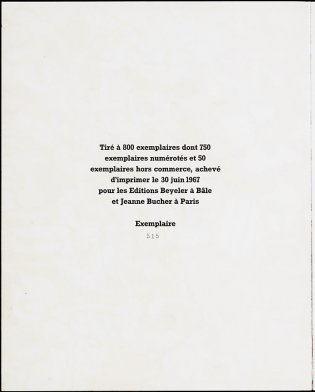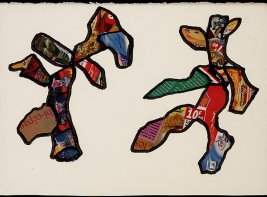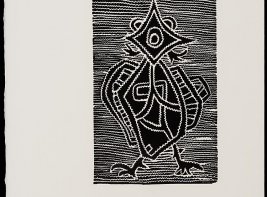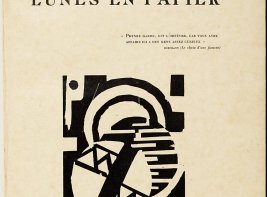Cerceaux 'sorcellent
Year: 1967
Author: Max Loreau (1928 - 1990)
Artist: Jean Dubuffet (1901 - 1985)
Publisher: Beyeler
Sharing ideas
In 1967 Dubuffet and Loreau collaborated on the book Cerceaux 'sorcellent. This book clearly shows that the writer and the artist shared the same ideas. Loreau seems to have written his poem the same way Dubuffet produced his screen prints in the L'Hourloupe style: strictly intuitively, by association. Loreau's choice of words was mostly guided by sounds and alliteration; end rhyme and repetition of words are techniques he uses excessively in this poem.
Crevasses tirent tir. Flamboie. Fibroie.
Broie proie. Proie. Proie.
Dubuffet produced a total of 21 screen prints, printed in red, white, blue and black, and he also designed the typography on the front cover. The book, printed on cardboard in an edition of 800 copies by the firm La Ruche, was published by two art galleries: Beyeler in Basel and Jeanne Bucher in Paris.In September 1978 Max Loreau broke off his friendship with Jean Dubuffet because the latter'srebellious, fiery character had become too much for him. Loreau however always felt an 'irrepressible passion' for Dubuffet's art.
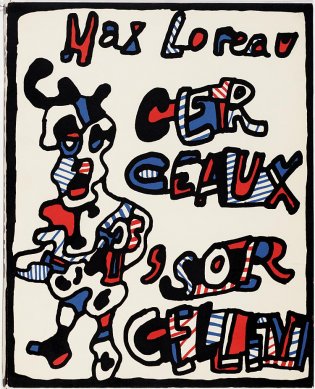

![Pagina [8]-[9] met zeefdruk door Jean Dubuffet](/sites/default/files/styles/galerie/public/images/cerceaux-sorcellent-p8-9.jpg?h=9ecfd7cd&itok=ZxYZXp2P)
![Pagina [33]met zeefdruk door Jean Dubuffet](/sites/default/files/styles/galerie/public/images/cerceaux-sorcellent-p33.jpg?h=4383cfe0&itok=fhwepo2o)
